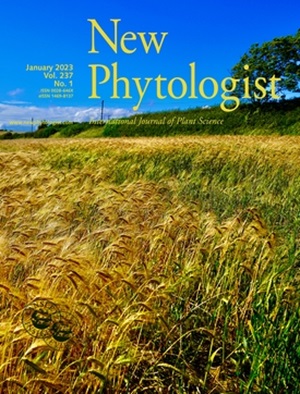通过表达 OAS-TL 基因的突变等位基因,同时强化水稻谷粒中的多种微量营养元素并减少砷积累。
IF 8.1
1区 生物学
Q1 PLANT SCIENCES
引用次数: 0
摘要
大米谷物中的有毒砷(As)含量通常相对较高,但必需微量营养素含量较低。生物强化必需微量营养素,同时减少砷在稻米中的积累,将有利于人类的营养和健康。Astol1 编码 Ser189Asn 取代(OsASTOL1S189N)的质体定位 O-乙酰丝氨酸(硫醇)裂解酶(OAS-TL),它通过与其伙伴丝氨酸乙酰转移酶(SAT)形成不可分离的半胱氨酸合成酶复合物来增强半胱氨酸的生物合成。在水培、盆栽和田间试验中,评估了OsASTOL1S对水稻生长、耐砷性、养分和砷在水稻籽粒中积累的影响。在 pOsGPX1::astol1 转基因株系中表达 OsASTOL1S189N 提高了 SAT 活性、硫酸盐吸收、半胱氨酸、谷胱甘肽、植物螯合素和烟酰胺的生物合成,并增强了对砷的耐受性。在一项盆栽实验和两项田间试验中,OsASTOL1S189N的表达降低了As的积累,同时增加了水稻籽粒中多种宏量营养元素(尤其是硫、氮和钾)和微量营养元素(尤其是锌和硒)的积累,而对植物生长和籽粒产量影响不大。我们的研究为水稻基因工程提供了一种新的策略,即通过生物强化多种必需营养元素,减少砷在水稻籽粒中的积累,同时提高水稻对砷的耐受性。本文章由计算机程序翻译,如有差异,请以英文原文为准。
Biofortifying multiple micronutrients and decreasing arsenic accumulation in rice grain simultaneously by expressing a mutant allele of OAS-TL gene
- Rice grains typically contain relatively high levels of toxic arsenic (As) but low levels of essential micronutrients. Biofortification of essential micronutrients while decreasing As accumulation in rice would benefit human nutrition and health.
- We generated transgenic rice expressing a gain-of-function mutant allele astol1 driven by the OsGPX1 promoter. astol1 encodes a plastid-localized O-acetylserine (thiol) lyase (OAS-TL) with Ser189Asn substitution (OsASTOL1S189N), which enhances cysteine biosynthesis by forming an indissociable cysteine synthase complex with its partner serine acetyltransferase (SAT). The effects on growth, As tolerance, and nutrient and As accumulation in rice grain were evaluated in hydroponic, pot and field experiments.
- The expression of OsASTOL1S189N in pOsGPX1::astol1 transgenic lines enhanced SAT activity, sulphate uptake, biosynthesis of cysteine, glutathione, phytochelatins and nicotianamine, and enhanced tolerance to As. The expression of OsASTOL1S189N decreased As accumulation while increased the accumulation of multiple macronutrients (especially sulphur, nitrogen and potassium) and micronutrients (especially zinc and selenium) in rice grain in a pot experiment and two field experiments, and had little effect on plant growth and grain yield.
- Our study provides a new strategy to genetically engineer rice to biofortify multiple essential nutrients, reducing As accumulation in rice grain and enhancing As tolerance simultaneously.
求助全文
通过发布文献求助,成功后即可免费获取论文全文。
去求助
来源期刊

New Phytologist
生物-植物科学
自引率
5.30%
发文量
728
期刊介绍:
New Phytologist is an international electronic journal published 24 times a year. It is owned by the New Phytologist Foundation, a non-profit-making charitable organization dedicated to promoting plant science. The journal publishes excellent, novel, rigorous, and timely research and scholarship in plant science and its applications. The articles cover topics in five sections: Physiology & Development, Environment, Interaction, Evolution, and Transformative Plant Biotechnology. These sections encompass intracellular processes, global environmental change, and encourage cross-disciplinary approaches. The journal recognizes the use of techniques from molecular and cell biology, functional genomics, modeling, and system-based approaches in plant science. Abstracting and Indexing Information for New Phytologist includes Academic Search, AgBiotech News & Information, Agroforestry Abstracts, Biochemistry & Biophysics Citation Index, Botanical Pesticides, CAB Abstracts®, Environment Index, Global Health, and Plant Breeding Abstracts, and others.
 求助内容:
求助内容: 应助结果提醒方式:
应助结果提醒方式:


